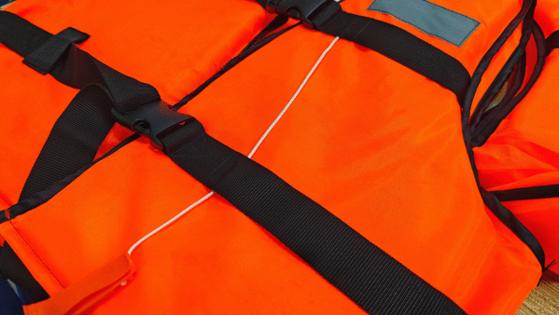Boating in California can be deadly. Here's how to stay safe this summer
Published in News & Features
SACRAMENTO, Calif. — Summer means more time on California’s lakes and rivers — and more accidents.
Northern California rivers and reservoirs were labeled “extremely dangerous” by experts in May, and fatal boating incidents are already making headlines.
If you’re heading out to float, paddle, swim, or boat, here’s what to know to stay safe and follow the law:
How common are boating accidents?
In 2023, the U.S. Coast Guard reported:
•3,844 boating incidents nationwide
•564 deaths
•2,126 injuries
•$63 million in property damage
The majority of fatal incidents involved drowning, with most victims failing to wear life jackets.
What are the main risks of taking a boat out in California?
•Cold water immersion and shock – The U.S. Coast Guard highlights that cold water “shock” can incapacitate you within seconds, increasing breathing difficulty and drowning risk before hypothermia even sets in .
•Unsafe equipment or lack of gear – Federal guidelines require vessels to carry Coast Guard–approved PFDs, fire extinguishers, visual distress signals and sound devices, per the U.S. Coast Guard Boater’s Guide. Vessels missing these items can be impounded or cited for unsafe operation .
•Boat operator negligence or DUI – The Coast Guard also states that negligent operation — including drinking, speeding, or unsafe boating — can lead to fines up to $5,000 and imprisonment.
•Electrical hazards and entrapment – U.S. electrical code and Coast Guard safety alerts warn of electric shock drownings from faulty wiring and entanglement in submerged debris or props.
What to know before getting on the water
Whether you’re in a kayak, on a jet ski or simply floating, here’s how to prepare:
•Wear a life jacket: 81% of boating deaths in 2021 were due to drowning, as reported by the U.S. Coast Guard. Of those, 83% weren’t wearing a life jacket.
•Get afree vessel safety check: These take 15–30 minutes and help ensure your boat meets safety standards. You can find out how to book yours via the Coast Guards’ website.
•Do a pre-departure checklist. Check for required safety gear like:Visual distress signalsFire extinguishersSound-producing devices
•Check the weather before you go.
Avoid alcohol: The state urges boaters not to drink on the water. A boating under the influence conviction can lead to:
•Up to 6 months in jail and/or a $1,000 fine
•A second offense within 7 years could mean up to one year in jail
•Your boat can also be impounded.
What should you do if you start to get into trouble?
•Stay calm, grab your personal flotation device or boat.The California Parks and Recreation advises holding onto your boat or float; staying with it increases rescue chances.
•Regain control of your breathing.During the first one minute of cold-immersion, control panic and breathing; you have about 10 minutes of meaningful movement before muscles shut down. The National Boating Safety School warns it is crucial not to panic and to focus on taking steady inhale and exhales.
•Call for help.Use a VHF radio and follow Coast Guard protocol: on Channel 16, say “Mayday” or “Pan‑Pan” with your position and situation.
•Signal visually.Use Coast Guard–approved distress signals like flares or flags included in your mandatory equipment .
What should you do if you see another boat in trouble?
•Offer help if safe – U.S. maritime law (46 USC s2304) obligates vessels to assist people in danger if it doesn’t pose a risk to your own boat .
•Make a “Pan‑Pan” call if urgent but non-life threatening – A Pan-Pan signals urgent but non-dangerous situations, alerting nearby boats and the Coast Guard.
•Approach with caution – The Coast Guard warns people trying to help others in trouble to keep engines off when people are in the water, watch for propellers, and maintain safe distance.
•Stay on the line until help arrives – Throw a line or floatable device; don’t enter the water unless properly trained or equipped.
What is California law on wearing life jackets?
Under California law, children 13 years old or younger must wear a U.S. Coast Guard-approved life jacket on a moving recreational vessel of any length, according to Bee archives.
According to the state’s Department of Parks and Recreation, the only three exceptions are when a child is:
•On a sailboat and are constrained by a harness tethered to the sailboat
•In an enclosed cabin
•On a vessel engaged in an emergency rescue situation
Recreational vessels can be motorized, including boats and jet skis, or non-motorized, such as paddle boards, sailboats, kayaks and canoes.
California law provides requirements for adults as well. Anyone 13 years or older that is engaging in recreational activities involving vessels 16 feet in length or shorter, there must be one wearable Coast Guard-approved life jacket per person on board.
The adults are not required to wear a life jacket but the safety vests must be available to them.
Do I need to take a boaters safety course? Do I need a boater card in California?
As of January 1, 2025, all motorized vessel operators regardless of age are required to carry a California Boater Card, according to California law.
In order to obtain the required boater card, individuals must successfully complete one boat safety course and pass an exam.
People can choose from more than 15 providers to take a course from including the United States Coast Guard Auxiliary, Ace Boater and California Division of Boating and Waterways.
What makes California rivers so dangerous?
California rivers, especially those fed by Sierra Nevada snowmelt, pose hidden dangers even on warm days.
The California Division of Boating and Waterways warns that rising rivers can be “dangerously cold” (often between 35–60°F), with swift currents and submerged obstacles that trip even strong swimmers and can trigger “cold water shock, paralysis and drowning”.
Similarly, the National Weather Service notes that water below 77°F can cause a gasp reflex and hyperventilation, drastically increasing drowning risk, even in calm conditions.
____
©2025 The Sacramento Bee. Visit at sacbee.com. Distributed by Tribune Content Agency, LLC.







Comments